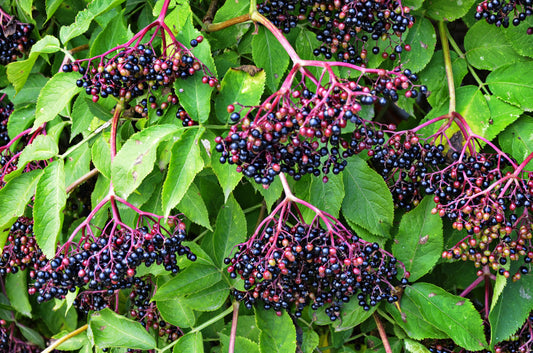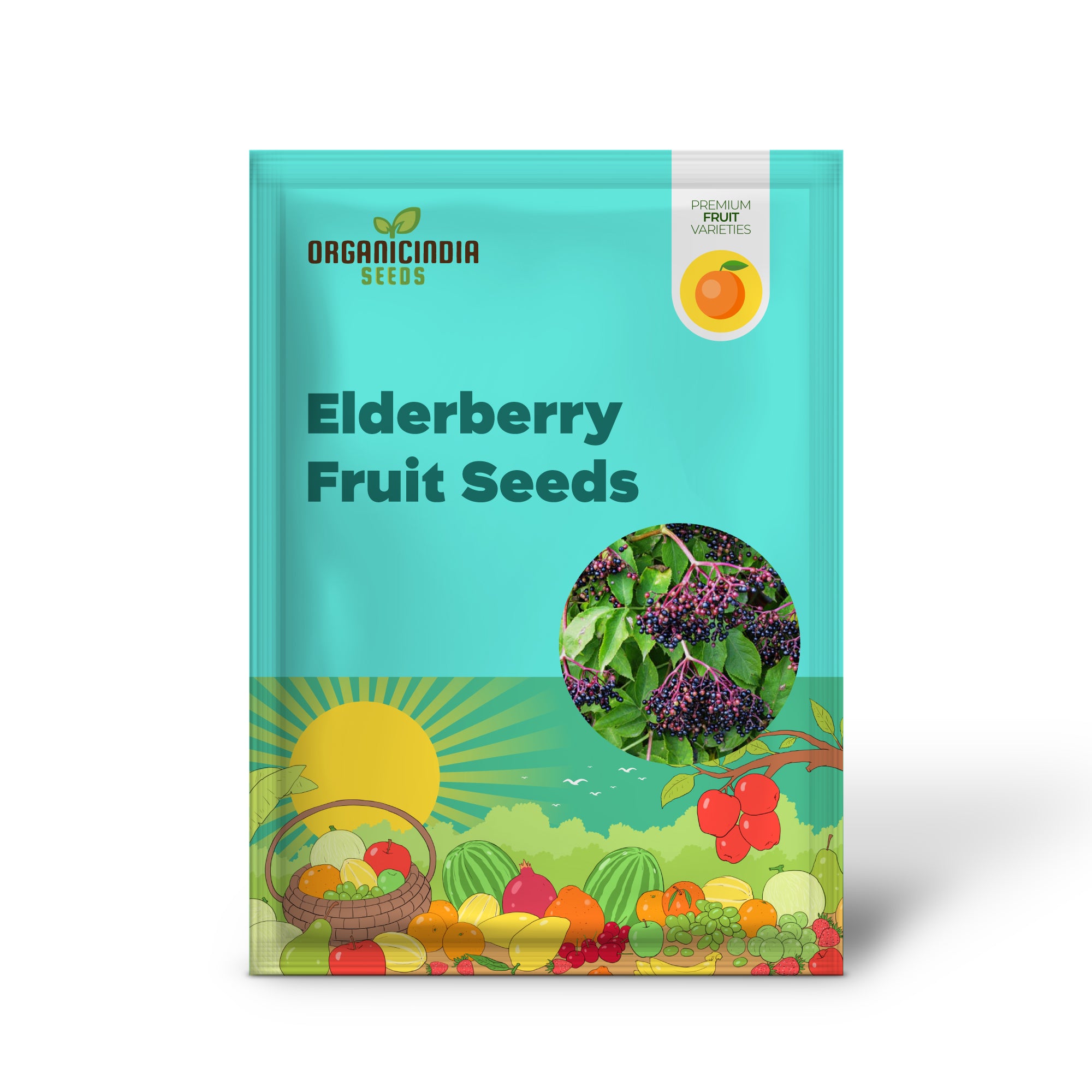



Free Shipping
Safe & Secure Payments
The American Elderberry (Sambucus nigra) is a deciduous shrub or small tree renowned for its abundant clusters of dark purple-black berries, which are often used to make jams, jellies, syrups, wines, and medicinal remedies. Elderberries have been valued for centuries for their nutritional and health benefits, particularly their immune-boosting properties. In addition to producing edible fruit, Elderberry bushes feature attractive, lacy white or cream-colored flowers and vibrant green foliage, making them an excellent addition to gardens as both a fruit producer and ornamental shrub. Easy to grow, elderberries thrive in a variety of conditions and can be used in both home gardens and larger landscapes.
Key Features:
Growing Information:
Light:
Elderberry bushes prefer full sun to partial shade. While they will grow in shaded areas, they tend to produce the best fruit and flowers when given 6+ hours of direct sunlight per day.
Soil:
Elderberry plants thrive in well-drained, moist, and fertile soils with a slightly acidic to neutral pH (6.0-7.5). They are adaptable to various soil types, including loamy, sandy, or clay-rich soils, but they do best in soil that retains some moisture while also draining well. If your soil tends to be heavy or poorly draining, consider adding organic matter to improve drainage.
Planting Tips:
To start from seeds, sow the Elderberry seeds directly in the soil or start them indoors about 6-8 weeks before the last frost. To increase germination rates, soak the seeds in water for 24-48 hours before planting. Plant seeds about 1/4 inch deep and keep the soil consistently moist during the germination period, which may take several weeks. Once seedlings are large enough, transplant them into their permanent location. Space plants about 6-10 feet apart to allow for adequate growth.
Watering:
Elderberries require consistent moisture, especially during their first growing season. Water regularly to keep the soil moist but not waterlogged. Once established, Elderberry bushes are moderately drought-tolerant, but regular watering during dry spells will help ensure healthy fruit production. Avoid allowing the soil to dry out completely, as this can affect berry production.
Benefits:
Growing Zones:
American Elderberry (Sambucus nigra) is hardy in USDA Zones 3-8. It thrives in a variety of climates, from cooler northern regions to warmer southern areas, and can be grown in many different environments, including wetland or garden settings.
How to Use in the Garden:
Conclusion:
The American Elderberry (Sambucus nigra) is a versatile, low-maintenance shrub that offers both ornamental beauty and functional benefits. Whether you grow it for its delicious, antioxidant-rich berries, its attractive flowers, or its wildlife-friendly properties, Elderberry is a great addition to any garden. Easy to grow and highly productive, this shrub provides year-round interest with its fragrant blooms in spring and abundant fruit in late summer and fall. Add Elderberry to your garden for fresh, nutritious berries and a stunning, wildlife-friendly plant that brings beauty and harvests for years to come.
Choose options

